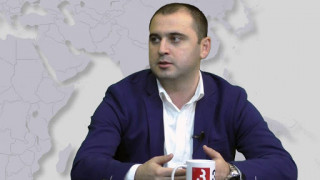Resume: Levan Khabeishvili made this statement on 21 July 2020. According to the Employment Support Agency’s information, at that time 218,791 self-employees eligible to collect the one-time assistance were already registered and 121,520 individuals had already collected their GEL 300. In total, GEL 36,456,000 was transferred to the beneficiaries’ accounts. Levan Khabeishvili’s numbers are substantially less as compared to the real figure and shows situation at the beginning of June 2020 – one month prior to his statement. Of note is that the share of beneficiaries who collected their assistance; that is 56%, has not changed significantly between those two dates and remains close to the figure in Mr Khabeishvili’s statement (50%). In regard to absolute figures, at the time of the statement, 218,791 self-employed individuals had already received their benefits which is 3.3 times higher as compared to the 66,000 as claimed by Mr Khabeishvili.
At the same time, the spirit of Levan Khabeishvili’s statement that self-employed individuals are struggling to meet the eligibility criteria was later confirmed by the government’s subsequent decision. On 6 August 2020, the Prime Minister of Georgia stated that the eligibility criteria were lifted for those self-employed persons who had already applied to collect their assistance.
FactCheck believes that the Government of Georgia’s announcement of that decision after the registration deadline is clearly unfair. In particular, individuals who did not meet the initial criteria and refrained from registering are no deprived of a chance to collect the assistance. In addition, nearly 80,000 individuals who did not meet the eligibility criteria but decided to register nevertheless will collect the government benefits. If the authorities were going to change the assistance disbursement rule, this should have been made known to the potential beneficiaries prior to the expiration of the registration deadline.
Supposedly, the government sought to garner political dividends by that decision without committing additional budgetary expenses. In particular, after lifting the eligibility criteria, the maximum amount of beneficiaries constitutes 251,000 individuals and it is possible to make payments without allocating an additional large budget resource since the assistance components was already designed to accommodate 250,000 beneficiaries. Therefore, had the eligibility criteria not been lifted, the GEL 75 million which had already been allocated would have been spent fully whilst had decision on lifting the eligibility criteria been announced before the registration deadline, the number of beneficiaries would have substantially increased, thereby necessitating the allocation of additional funding.
Analysis
United National Movement candidate for majoritarian MP, Levan Khabeishvili, stated on air on TV Kavkasia that 132,000 self-employed individuals gathered documents and applied to collect the GEL 300 one-time assistance whilst only 66,000 actually received it.
According to the Government of Georgia’s anti-crisis plan, disbursements for unemployed individuals were divided into two packages and defined as follows:
1. Hired employees who lost jobs or were forced to take unpaid leave were supposed to receive GEL 200 for six months, totalling GEL 1,200. According to preliminary estimates, nearly 350,000 individuals would be eligible to collect this benefit at a cost of GEL 460 million to the Georgian budget.
2. Self-employed individuals were eligible to collect the one-time GEL 300 assistance if they produced evidence of losing their income. It was planned to allocate GEL 75 million from the Georgian budget to provide assistance for nearly 250,000 citizens.
The authorities offered self-employed individuals four times less assistance as compared to hired employees, additionally imposing quite hard eligibility criteria. Therefore, they allowed for a high probability of “omission” in certain groups of self-employed persons. As a result, it was easy to predict at the very beginning that many self-employed individuals would not be able to collect the benefits. FactCheck provided a detailed explanation of this issue.
According to the Employment Support Agency’s information, at that time 218,791 self-employed individuals eligible to collect the one-time assistance were already registered and 121,520 individuals had already collected the GEL 300. In total, GEL 36,456,000 was transferred to the beneficiaries’ accounts. Levan Khabeishvili’s numbers are substantially less as compared to the real figure and show the situation at the beginning of June 2020 – one month prior to his statement. Of note is that the share of beneficiaries who collected their assistance; that is 56%, has not changed significantly between those two dates and remains close to the figure in Mr Khabeishvili’s statement (50%). In regard to absolute figures, at the time of the statement, 218,791 self-employees had already received their benefits which is 3.3 times higher as compared to 66,000.
In regard to the issue of government benefits, of further note is that registration for eligible beneficiaries ended on 31 July 2020 and a total of 251,690 self-employed individuals were registered. As of 10 August 2020, 171,801 individuals (68%) have already received their assistance, totalling GEL 51,540,300.
The Prime Minister, Giorgi Gakharia, made a statement on 6 August 2020 that the GEL 300 assistance will be disbursed to every registered self-employed individual whether or not he meets the eligibility criteria. Of note is that part of the opposition from the beginning demanded unconditionally extending benefits to those self-employed. However, the benefit payment principle was still vague, since it was impossible to apply objective criteria to distinguish those self-employed from unemployed people and from those outside of the workforce (see FactCheck’s article). Of important note is that the government assistance was initially designed for nearly 250,000 individuals and there were almost as many officially registered beneficiaries with 80,000 of them failing to meet the eligibility criteria as of 10 August 2020. Therefore, it would have been impossible to fully spend the budget funds already allocated for the assistance programme without lifting the eligibility criteria. On the one hand, the enlargement of the pool of potential beneficiaries does not require the allocation of additional funding, since the funds which had already been allocated are almost fully sufficient to cover the additional needs. On the other hand, the government’s decision to help those self-employed individuals who understood they were not meeting the eligibility criteria but filled out registration forms nevertheless is unfair to those honest self-employed persons who acknowledged they were not meeting the eligibility criteria and refrained from registration.







